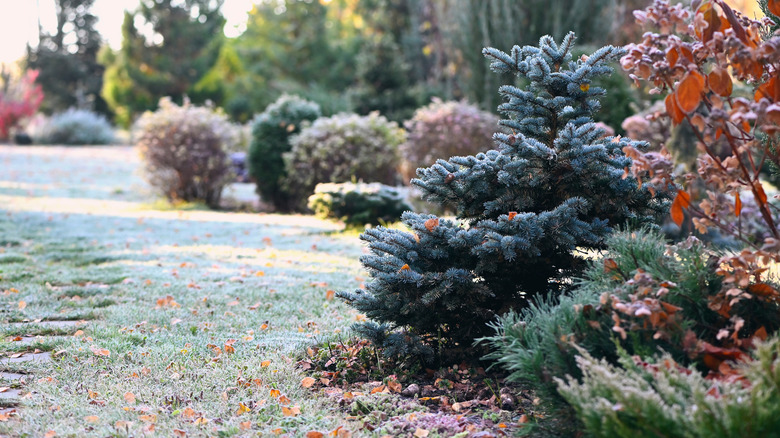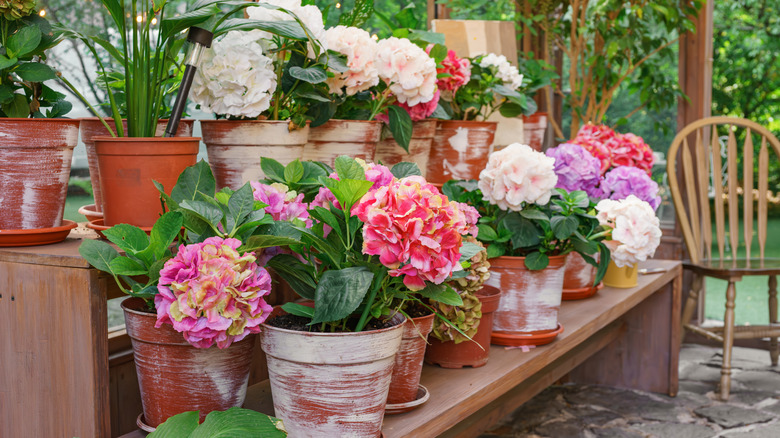Crucial Things To Do For Potted Hydrangeas Before The First Frost
When cold weather approaches, potted hydrangeas need extra care to make it through winter. These delicate shrubs are at a greater risk when left planted in containers over winter because their buds aren't as cold-hardy as other parts of the plant, and their roots won't have the protective insulation that the surrounding soil offers. If left unprotected, frost can damage buds, resulting in bare stems by the time spring arrives. The good news is that it's possible to help your plants overwinter and bloom again the following year with some changes to your watering routine and some pruning.
While hydrangeas are hardy across a wide range of climates in USDA zones 3 to 9, those grown in pots outdoors are exposed to colder air temperatures and harsher conditions than those in soil beds. Before frost arrives, start preparing your hydrangeas by watering them well and checking the plant's pot has good drainage — excess moisture can damage roots. If you're growing a florist or gift hydrangea, it's especially important to protect it, as these greenhouse-forced plants are less winter hardy than nursery-grown varieties. When you're winter-proofing your hydrangeas, there are a few mistakes you need to avoid at all costs. That said, you can always move your pots to a sheltered, unheated space — such as a garage or shed — for the protection they need from harsh winter conditions if you're looking for an easy fix or don't have the time to overwinter your hydrangeas correctly outside.
How to prepare potted hydrangeas for frost
Hydrangeas that flower on old wood (meaning the previous year's growth), such as bigleaf (Hydrangea macrophylla) and oakleaf (Hydrangea quercifolia) varieties, develop next year's buds during late summer and fall. This means that if you prune too late (after the flower buds have already formed), you'll be cutting off blooms for the upcoming season. If you've mistakenly done this before, it could be the real reason your hydrangeas aren't blooming. Also, make sure that you only remove dead or damaged stems from your hydrangeas, leaving any healthy stems intact.
You can protect your hydrangeas during cooler weather with a simple mulching tip, and that is to encase the pot with wire mesh or burlap and fill it with leaves and/or mulch to help stabilize the temperature of the soil. This provides extra protection for your plants, though you can also put the pot in your garden soil or cover it with an upside-down basket as an alternative.
Once winter sets in, keep the soil moist but don't overwater your plants, and resist the urge to bring plants into heated indoor rooms, which can interrupt dormancy. As temperatures rise again in spring and the threat of frost fades, move the pots to an outdoor area that sees several hours of sunlight a day and gradually remove any insulation you applied. Your hydrangeas will repay you with strong growth and beautiful flowers once more if you prepare them to survive the winter months.

